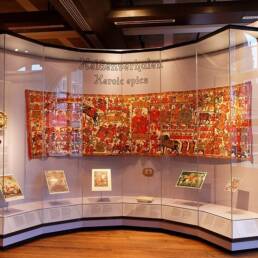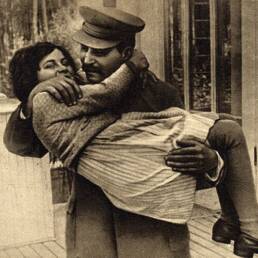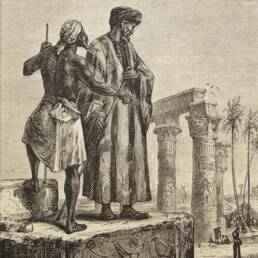In prime ‘hippy era’, a certain fabric/fashion came to be revived most famously by a certain Band from Liverpool, England. The fashion in question derives its name from a Scottish city and incorporates delicate Persian & Indian styles.
On April 19, 1943, Swiss chemist Albert Hofmann ingested a minute amount (250 mg) of a compound derived from the ergot fungus and proceeded to take a bicycle ride. Little did he know that his experiment would soon mushroom into a movement or better said: an era.
Couple decades in, the youth of the world were hooked onto music and psychedelic drugs, and into this movement fell some Liverpudlian lads. With their long hair, strange-looking clothes, and awfully good music, they called themselves the Beatles.
The band and their swanky rock ’n’ roll aura became the very symbol of the era. Not only did their music quickly become iconic but their fashion and accessories also began to set some trends.
The band’s iconic style inspired from Eastern prints and fabrics rubbed off heavily on its fans. The band made regular visits to India not only to embrace its ancient philosophy and music, but to also be inspired by Indian fabrics, especially the Paisley.
The Paisley pattern is believed to have originated in Yazd, Iran. Wearing the Paisley meant making a statement of non-conformity, standing out from the sober, and wearing the fade of the day. In other words, it was a symbol of bohemianism.
The original Persian motif ‘boteh’ or ‘buta’ is thought to have been a representation of a floral spray combined with a cypress tree – a Zoroastrian symbol of life and eternity. It has strong connections with Hinduism and also bears a fascinating resemblance to the famous yin-yang symbol.
Paintings of Persian royals and kings from the 15th and 16th centuries depict heavy usage of this motif pattern. By the 17th century, the pattern had arrived in India and in the valley of Kashmir where it was intricately woven into Pashmina shawls.
Then came the empire, or rather the company (EIC), with their bloated egos and an inaccessible urge to make money. Soon, these exquisite fabrics and shawls started arriving in Europe and quite literally took the continent by storm.
These fabrics, however, cost a fortune to export and soon efforts were made to produce the designs locally. Mills were opened in a number of European cities such as Lyons, Norwich, Vienna, and one in a little town in Scotland called Paisley.
It is believed that William Wallace, the hero of Scottish independence, had his early education in the town’s abbey that dated back to the 7th century. Later, in the 17th century, the town became the very heart of Europe’s love affair with the Persian ‘buta’.
At its peak, well over fifty shawl manufacturers, working with varying layouts and designs, were based there. Paisley produced most of Europe’s shawls at a time and that’s probably why the name stuck, even though the pattern goes by various names in different places.
Europe’s gain was, unsurprisingly, detrimental to the economies of the east. The market was bloated with Paisley shawls. They turned cheap and their exclusiveness soon faded away. However, the Paisley comeback in the 1960s can’t solely be credited to the Beatles.
The Rolling Stones, Jimi Hendrix, Mick Jagger, and David Bowie are only some of the names associated with the famed fabric. And, of course, the summer of 1967. The Paisley would go on to catwalks, fashion magazines, and even feature in song lyrics.
In 1982, the British new wave band ‘Television Personalities’ released the album, ‘They Could Have Been Bigger Than The Beatles’, that includes the song, ‘The Boy In The Paisley Shirt’. In 1997, they released the live album, ‘Paisley Shirts & Mini Skirts’.
In 1985, pop icon Prince came out with ‘Around the World in a Day’. The first single on the album was called ‘Paisley Park. It was said to have been inspired by the neo-psychedelic movement on the American West Coast called the ‘Paisley underground’.
No coincidence made Paisley the face of the Psychedelic movement. With a thousand years of multicultural facets interwoven into its history, it might have been just what the movement needed.
Some of you may recall John Lenon causing an outrage when he had a motif paint job done on his Rolls Royce Phantom V, which was later aptly renamed the ‘Psychedelic Rolls’. Lenon was presumably inspired by the Paisley.
Sources: https://www.bbc.com/culture/article/20151021-paisley-behind-rocks-favourite-fashion, https://www.paisleypower.com/history-of-paisley, https://www.rollingstone.com/music/music-features/john-lennons-phantom-v-the-story-of-the-psychedelic-beatle-mobile-253088/, Wikimedia




